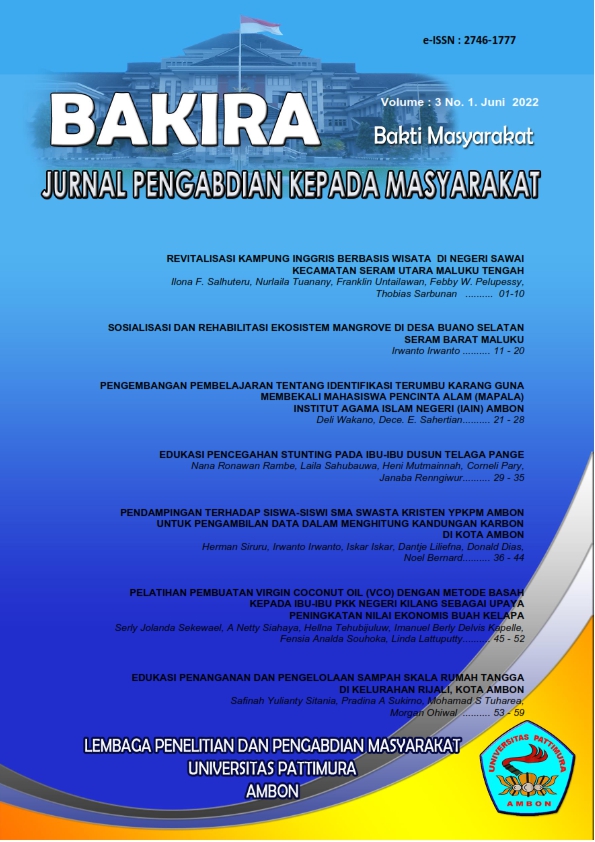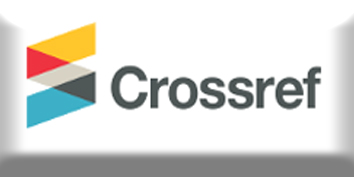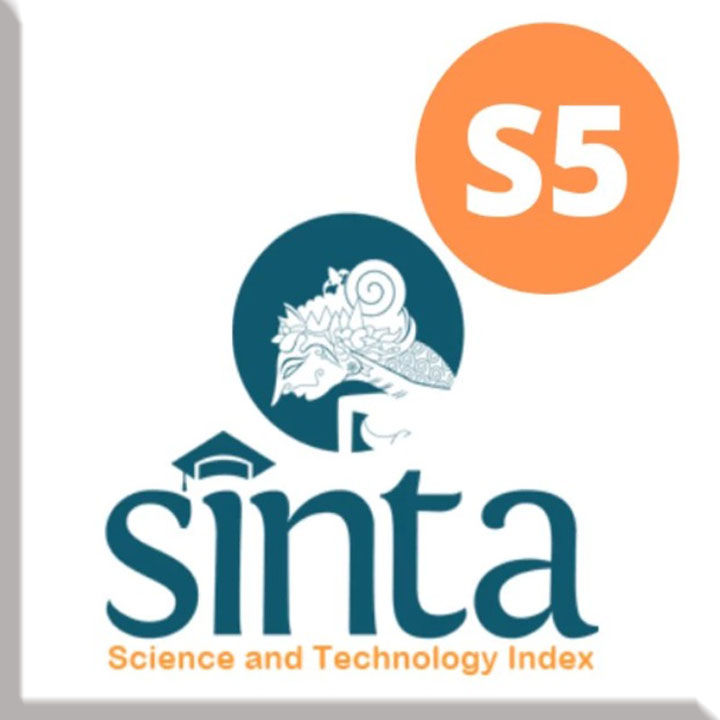PENGEMBANGAN PEMBELAJARAN TENTANG IDENTIFIKASI TERUMBU KARANG GUNA MEMBEKALI MAHASISWA PENCINTA ALAM (MAPALA) INSTITUT AGAMA ISLAM NEGERI (IAIN) AMBON
Abstract
Indonesia is an archipelagic country consisting of 13,466 islands with a land area of 1,922,570 km2 and a water area of 3,257,483 km2. Based on Law no. 4 of 2011, that the area of coral reefs in Indonesia based on analysis of satellite imagery is around 2.5 million hectares. In addition, Indonesia is in the world's coral reef triangle area which makes Indonesia the center of world coral reef diversity with a total of 569 species belonging to 82 genera. Nonetheless, coral reefs are highly vulnerable to damage, particularly by human pressure. The partner's problem is the lack of sufficient knowledge regarding the identification of coral reefs so that there is a need for training and coaching. The solutions offered in solving partner problems include conducting: training related to how to identify coral reefs in Mamala Coastal Waters, Central Maluku, coaching related to monitoring community activities that damage coral reef ecosystems, and monitoring and evaluation of all activities that have been carried out. The resulting output is a publication in the Unpatti Ambon dedication journal (BAKTI). The implementation method is in the form of observation or initial approach to students of Nature Lovers (MAPALA) IAIN Ambon, Counseling, Training, Monitoring and Evaluation. The results achieved after the initial approach, counseling and training, Nature Lover Students (Mapala) IAIN Ambon City have the ability to identify Coral Reefs and increase knowledge about the types of Coral Reefs and the application of the Line Intercept Transect Method (LIT)
Downloads
References
Candri, D. A., Ahyadi, H., Riandinata, S. K., & Virgota, A. (2019). Analisis Persentase Tutupan Terumbu Karang Gili Tangkong, Sekotong Kabupaten Lombok Barat. BioWallacea, 5(1), 29–35. https://doi.org/10.29303/biowal.v5i1.106
Giyanto, Abrar M. Hadi T. A, Budiyanto A, Hafizt M, Salatalohy A, dan Iswari M.Y. 2017.
Status Terumbu Karang Indonesia 2017. Coremap-CTI dan Pusat Penelitian Oseanografi- LIPI. Jakarta.
Octriviana, R., Ainnurasjid, & Ardiarini, R. (2017). Observasi Plasma Nutfah Bambu Di Kabupaten Malang. Jurnal Produksi Tanaman, 5(6), 1044–1052.
Sangaji M. 2017. Potensi Dan Status Kerentanan Terumbu Karang Di Perairan Pelita Jaya Kabupaten Seram Bagian Barat Provinsi Maluku. Jurnal Biology Science & Education. Vol.6 N0.1 hal. 26-35.
Sarbini, R., Kuslani, H., & Nugraha, Y. (2016). Teknik pengamatan tutupan terumbu karang dengan menggunakan transek garis (line intercept transect) di Pulau Kumbang Kepulauan Karimun Jawa. Buletin Teknik Litkayasa, 14(1), 33–42.
Salim, D. (2012). Pengelolaan Ekosistem Terumbu Karang Akibat Pemutihan (Bleaching) Dan Rusak. Jurnal Kelautan, 5(2), 1907–9931. https://doi.org/10.1016/j.stemcr.2014.03.011
Saptarini, D., Mukhtasor, & Rumengan, I. F. M. (2016). Variasi Bentuk Pertumbuhan (lifeform) Karang di Sekitar Kegiatan Pembangkit Listrik, Studi Kasus Kawasan Perairan PLTU Paiton, Jawa Timur. Seminar Nasional Biodiversitas, 5(2), 1–9.
Setiady, D., & Usman, E. (2018). Terumbu Karang Berdasarkan Kedalaman Laut dan Pengaruh Sedimen Perairan Kepulauan Aruah, Kabupaten Rokan Hilir, Provinsi Riau. Jurnal Lingkungan Dan Bencana Geologi, 9(1), 21–30.
Wahib, N. K., Kelautan, I., Brawijaya, U., & Malang, K. (2019). Kajian Efektivitas Penggunaan Metode LIT, PIT, dan QT Untuk Monitoring Tutupan Substrat.













